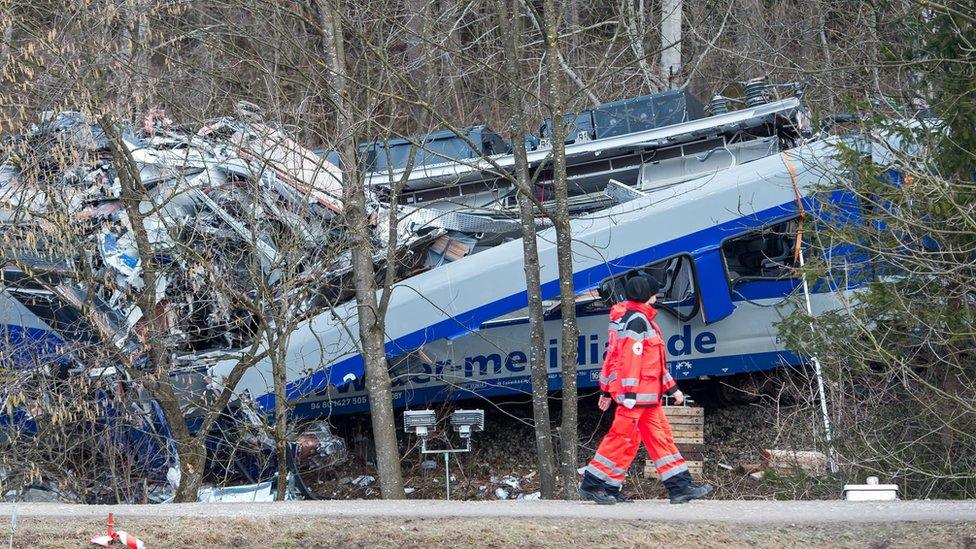Germany train crash: Human error to blame, says prosecutor
- Published

The trains collided head-on while travelling at about 100km/h (60mph)
Human error by a train controller was to blame for a crash in Bavaria, Germany, last week that killed 11 people, prosecutors said.
Dozens more were injured after two commuter trains collided on a single-track stretch of railway.
An area controller opened the track to the two trains and tried to warn the drivers, according to the prosecutors.
The man, a 39-year-old, is likely to be charged with involuntary manslaughter and could face five years in jail.
"If he had complied with the rules... there would have been no collision," said Chief Prosecutor Wolfgang Giese.
The trains crashed head-on while both were travelling at about 100km/h (60mph) east of Bad Aibling, a spa town about 60km south-east of Munich.

Investigations focused on why the trains were on the tracks at the same time despite safety mechanisms.
The crash site is on a bend, meaning the drivers had no visual contact so collided largely without braking, officials said.
Prosecutors said the controller's actions had "catastrophic" consequences but they do not believe he acted deliberately.
The stretch of line had an automatic signalling system designed to halt any train that passed a stop signal.
But reports in German media suggested that the system had been switched off to let the eastbound train, which was running late, go past.
The investigation ruled out technical faults with the trains or signalling system as being behind the crash.
All those killed in the crash were men aged between 24 and 59.


Germany's rail safety mechanism
In case signals fail, German railways are fitted with a final safety guard to prevent crashes.
Cab signalling known as PZB (Punktfoermige Zugbeeinflussung - or "intermittent train control") will set off an alarm in the driver's compartment when the train approaches a red light.
If the driver does not respond by pressing a button, the train will brake automatically.

- Published16 February 2016

- Published9 February 2016

- Published9 February 2016
